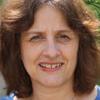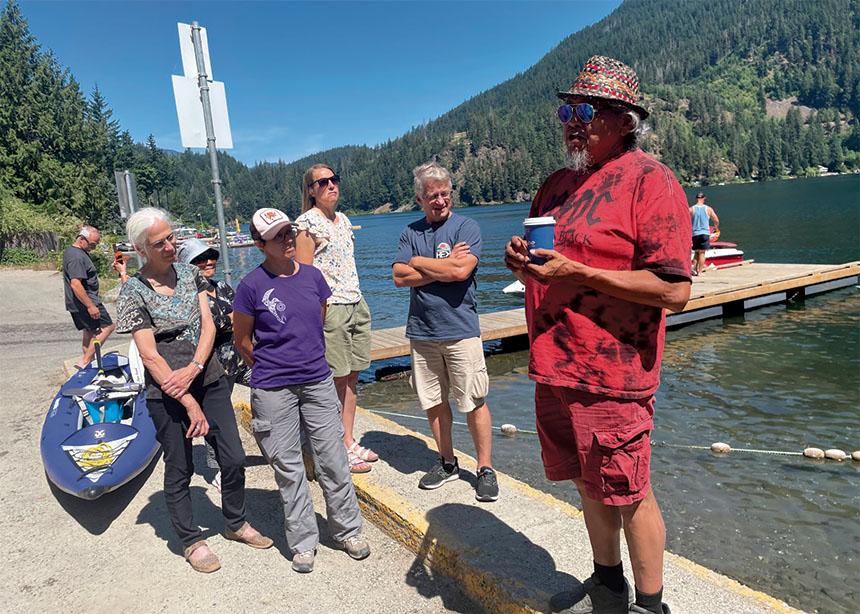A nine-hour bus tour gave 30 participants a taste of the history of places that Indigenous people had inhabited for 10,000 years prior to the arrival of Mennonites in B.C. in the 1930s. The July 14 tour was guided by Sonny McHalsie, a cultural advisor and historian at the Stó:lō Nation’s Research and Resource Management Centre located in Chilliwack, B.C.
McHalsie said he began collecting stories of the local elders 30 years ago and now offers immersive educational bus tours through Stó:lō territory.
The July 14 tour, which focused on significant Indigenous sites, history, beliefs and culture, was initiated by Mennonite Church B.C. and Mennonite Central Committee B.C.’s Partners in Reconciliation program. It included stops at Tomtomiyeqw Lookout, Thunderbird Mountain, Kawkawa (Q’owqewem) Lake, Coquihalla Fishing Rock, Telte-Yet Pithouse and the Lady Franklin Rock (Bad Rock) in Yale.
Participants were immersed in Indigenous history and lore as McHalsie pointed out names of over 100 mountains, rivers and land formations in the Stó:lō language. With new eyes, participants saw mountains that resembled human forms. They heard about Stó:lō youths receiving a spirit power at puberty but not being allowed to talk about it. They learned about canoe construction and different ways of fishing and drying salmon.
More sobering stories included those about the CN Railway destroying sacred land for railroad construction, and up to two-thirds of the Stó:lō dying of smallpox.
At the site of the Telte-Yet Pithouse in a campground in Hope, McHalsie explained the tradition of constructing pithouses for winter shelter. Recreational campers wandering by undoubtedly had no idea that the large depression in the ground had such a rich and ancient history.
Participants expressed appreciation for McHalsie’s depth of knowledge, while McHalsie expressed thanks for those who took time to learn more about Indigenous culture. “We need to listen after what’s been perpetrated over the years,” said Robert Martens. Alissa Funk described the experience as “getting a different sense of place.”
Cheryl Isaac chose to go on the tour as it has been her goal this year to learn more about the Indigenous people of the Fraser Valley. “The highlight for me was the explanation of why mountains were named just by the way that the Indigenous people saw them, whether they looked like an animal, bird, or perhaps a woman or a man or a child,” she said. “I could actually recognize what Sonny was telling us . . . [it] made perfect sense to me.”
Gareth Brandt said, “I’ve always known in my head that there were people here before European settlers came, but it added a layer of depth to travel through our valley hearing the original Indigenous place names from an Indigenous guide and experiencing the sites where Indigenous people have lived, worked, played and worshiped for thousands of years.” Brandt said that hearing over 100 place names was overwhelming, still, “naming is claiming,” and “learning these names is part of learning the truth that can lead to reconciliation.”





Add new comment
Canadian Mennonite invites comments and encourages constructive discussion about our content. Actual full names (first and last) are required. Comments are moderated and may be edited. They will not appear online until approved and will be posted during business hours. Some comments may be reproduced in print.